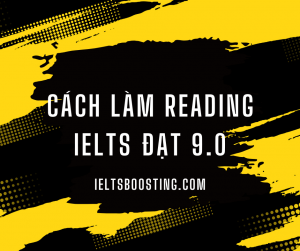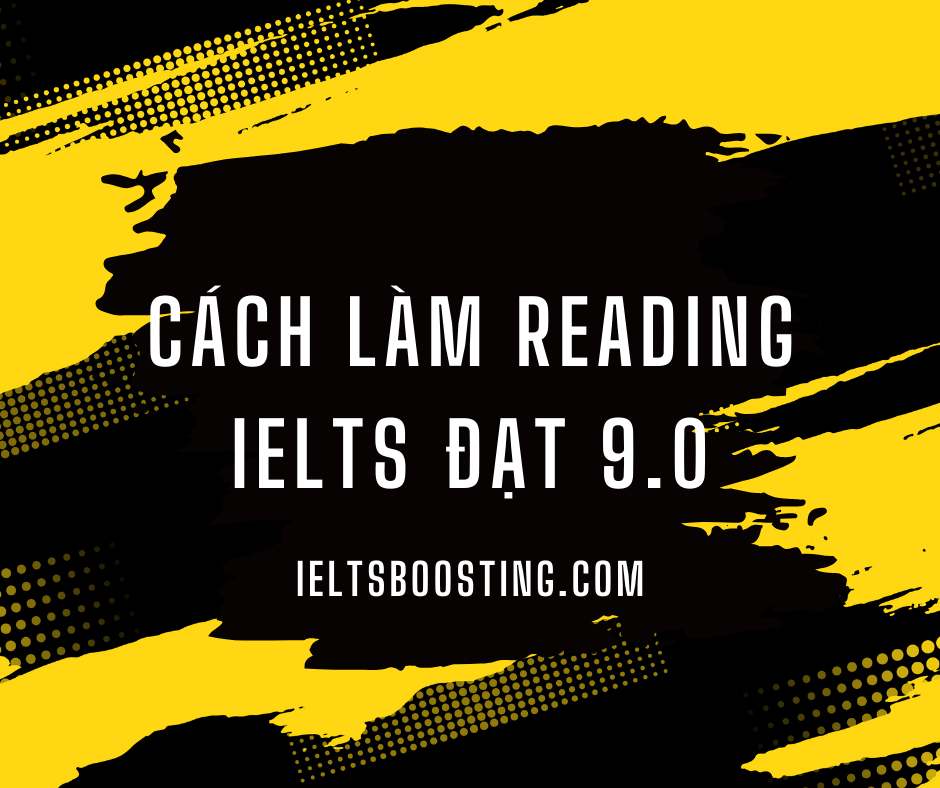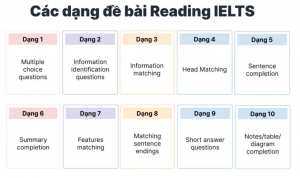Cách làm reading IELTS là bài viết giới thiệu 1 số giáo trình và cách làm bài reading IELTS hiệu quả để đạt điểm cao. Mình vừa mới thi IELTS tháng 4 năm 2024 và đạt được 8.0 cho môn reading trong khi lần trước (tháng 12-2023) mình chỉ được 6. Hãy cùng tìm hiểu cách mình nâng cao band trong thời gian ngắn như thế nào nhé.
Học reading IELTS bằng tài liệu uy tín
Trước kỳ thi IELTS tháng 12 năm 2023 mình rất bối rối không biết học tài liệu nào để đạt điểm cao nên mình có lên mạng tìm hiểu và thấy nhiều giáo trình cho reading, đặc biệt là bộ Recent actual test. Vậy là mình bỏ tiền ra mua cả bộ khoảng 1000 trang, rồi đọc mong rằng đi thi biết đâu gặp đề cũ. Sau này mình mới nhận ra đống tài liệu đó có nhiều đáp án không chính xác.
Dù đã học gần 1000 trang nhưng đi thi chỉ được 6 điểm reading mình mới tìm hiểu tại sao lại như vậy.
Sau này đọc lại sách của cô Cullen (một tác giả nổi tiếng sách IELTS) mình mới biết là mình đã dùng giáo trình không uy tín. Việc học giáo trình uy tín giúp Bạn hiểu rõ cách ra đề, Cô Cullen có nói bài đọc reading không hề bẫy đáp án khó khăn, chỉ cần bạn đọc hiểu nội dung kỹ càng và đối chiếu với đáp án là có thể tìm ra đáp án đúng.
Một số giáo trình nên dùng khi luyện IELTS reading là
The Official Cambridge Guide to IELTS
IELTS traner 1
Cambridge 8-18
Nắm vững các dạng bài của ielts reading – 10 dạng bài phổ biến
Việc nắm vững các dạng bài giúp Bạn hiểu rõ cách làm và trình tự, cách tìm đáp án trong bài thế nào cho nhanh. Nếu Bạn làm bài mà thấy dạng nào mình hay sai thì hãy tập trung cải thiện phần đó. Một cách để tìm tài liệu uy tín để luyện đề theo dạng là đăng ký thi bên British Coucil, khi đăng ký mình sẽ nhận được tài khoản luyện thi miễn phí cho tất cả các kỹ năng.
Hãy tìm hiểu 10 dạng bài dưới đây và cách làm cho từng dạng bài.
- Dạng bài Multiple Choice – Chọn đáp án
- Dạng bài True False Not Given, Yes/No/Not Given – cách l àm True false not given
- Dạng bài Matching Information
- Dạng bài Matching Headings Question – cách làm matching headings
- Dạng bài Matching Features – Nối đặc điểm
- Dạng bài Matching Ending – Hoàn thành câu chưa hoàn chỉnh
- Dạng Sentence Completion
- Dạng Notes/Table/Flow Chart Completion
- Dạng bài Diagram Labelling
- Dạng bài Short Answer Questions
các dạng bài của ielts reading
Cách làm reading ielts điểm cao
Một trong những cách làm IELTS reading nhanh và chính xác là đọc kỹ từng đoạn rồi giải quyết câu hỏi theo thứ tự. Bằng cách này Bạn sẽ tiết kiệm được thời gian khỏi đọc đi đọc lại nhiều lần câu hỏi.
Hãy cùng làm thử bài đọc dưới đây trong sách Cambridge IELTS 18
Bài đọc này chia làm 3 dạng câu hỏi:
- matching information
- complete the summary
- multiple choice
Vì dạng matching information nằm rải rác trong bài nên mình sẽ đọc qua dạng 2 đọc manh mối đáp án đầu tiên rồi sau đó qua multiple choice đọc và gạch chân câu hỏi từ 10-13.
Sau đó mình sẽ vào đọc đoạn 1 và đọc 5 câu hỏi trong phần matching information. Bạn sẽ thấy đoạn 1 chứa đáp án cho 2 câu hỏi 6 và 7. Tiếp theo mình áp dụng tương tự cho các đoạn B, C,D,E

cách làm reading ielts
Bài đọc Green roofs
A
Rooftops covered with grass, vegetable gardens and lush foliage are now a common sight in many cities around the world. More and more private companies and city authorities are investing in green roofs, drawn to their wide-ranging benefits. Among the benefits are saving on energy costs (Q6), mitigating the risk of floods, making habitats for urban wildlife, tackling air pollution and even growing food (Q7). These increasingly radical urban designs can help cities adapt to the monumental problems they face, such as access to resources and a lack of green space due to development. But the involvement of city authorities, businesses and other institutions is crucial to ensuring their success – as is research investigating different options to suit the variety of rooftop spaces found in cities. The UK is relatively new to developing green roofs, and local governments and institutions are playing a major role in spreading the practice. London is home to much of the UK’s green roof market, mainly due to forward-thinking policies such as the London Plan, which has paved the way to more than doubling the area of green roofs in the capital.
B
Ongoing research is showcasing how green roofs in cities can integrate with ‘living walls’: environmentally friendly walls which are partially or completely covered with greenery, including a growing medium, such as soil or water. Research also indicates that green roofs can be integrated with drainage systems on the ground, such as street trees (Q4), so that the water is managed better and the built environment is made more sustainable. There is also evidence to demonstrate the social value of green roofs. Doctors are increasingly prescribing time spent gardening outdoors for patients dealing with anxiety and depression (Q8). And research has found that access to even the most basic green spaces can provide a better quality of life for dementia sufferers and help people avoid obesity (Q9).
C
In North America, green roofs have become mainstream, with a wide array of expansive, accessible and food-producing roofs installed in buildings. Again, city leaders and authorities have helped push the movement forward – only recently, San Francisco, USA, created a policy requiring new buildings to have green roofs. Toronto, Canada, has policies dating from the 1990s, encouraging the development of urban farms on rooftops (Q2). These countries also benefit from having newer buildings than in many parts of the world, which makes it easier to install green roofs. Being able to keep enough water at roof height and distribute it right across the rooftop is crucial to maintaining the plants on any green roof— especially on ‘edible roofs’ where fruit and vegetables are farmed (Q10,11). And it’s much easier to do this in newer buildings, which can typically hold greater weight, than to retro-fit old ones. Having a stronger roof also makes it easier to grow a greater variety of plants, since the soil can be deeper (Q10,11).
D
For green roofs to become the norm for new developments, there needs to be support from public authorities and private investors (Q1). Those responsible for maintaining buildings may have to acquire new skills, such as landscaping, and in some cases, volunteers may be needed to help out. Other considerations include installing drainage paths, meeting health and safety requirements and perhaps allowing access for the public, as well as planning restrictions and disruption from regular activities in and around the buildings during installation. To convince investors and developers that installing green roofs is worthwhile, economic arguments are still the most important. The term ‘natural capital’ has been developed to explain the economic value of nature; for example, measuring the money saved by installing natural solutions to protect against flood damage, adapt to climate change or help people lead healthier and happier lives (Q5).
E
As the expertise about green roofs grows, official standards have been developed to ensure that they are designed, constructed and maintained properly, and function well. Improvements in the science and technology underpinning green roof development have also led to new variations in the concept. For example, ‘blue roofs’ enable buildings to hold water over longer periods of time, rather than draining it away quickly – crucial in times of heavier rainfall. There are also combinations of green roofs with solar panels, and ‘brown roofs’ which are wilder in nature and maximize biodiversity (Q12,13). If the trend continues, it could create new jobs and a more vibrant and sustainable local food economy – alongside many other benefits. There are still barriers to overcome, but the evidence so far indicates that green roofs have the potential to transform cities and help them function sustainably long into the future. The success stories need to be studied and replicated elsewhere, to make green, blue, brown and food-producing roofs the norm in cities around the world (Q3).
Questions 1 and 5
Questions 6-9
Complete the summary below.
Choose ONE WORD ONLY from the passage for each answer.
Write your answers in boxes 6-9 on your answer sheet.
Advantages of green roofs
City rooftops covered with greenery have many advantages. These include lessening the likelihood that floods will occur, reducing how much money is spent on 6………………. and creating environments that are suitable for wildlife. In many cases, they can also be used for producing 7………………. .
There are also social benefits of green roofs. For example, the medical profession recommends 8………………. as an activity to help people cope with mental health issues. Studies have also shown that the availability of green spaces can prevent physical problems such as 9………………. .
Questions 10 and 11
Choose TWO letters, A-E.
Write the correct letters in boxes 10 and 11 on your answer sheet.
Which TWO advantages of using newer buildings for green roofs are mentioned in Paragraph C of the passage?
A a longer growing season for edible produce
B more economical use of water
C greater water-storage capacity
D ability to cultivate more plant types
E a large surface area for growing plants
Questions 12 and 13
Choose TWO letters, A-E.
Write the correct letters in boxes 12 and 13 on your answer sheet.
Which TWO aims of new variations on the concept of green roofs are mentioned in Paragraph E of the passage?
B to grow plants successfully even in the wettest climates
C to regulate the temperature of the immediate environment
D to generate power from a sustainable source
E to collect water to supply other buildings
Previous Article
Describe your favorite place in your house where you can relax
Next Article


